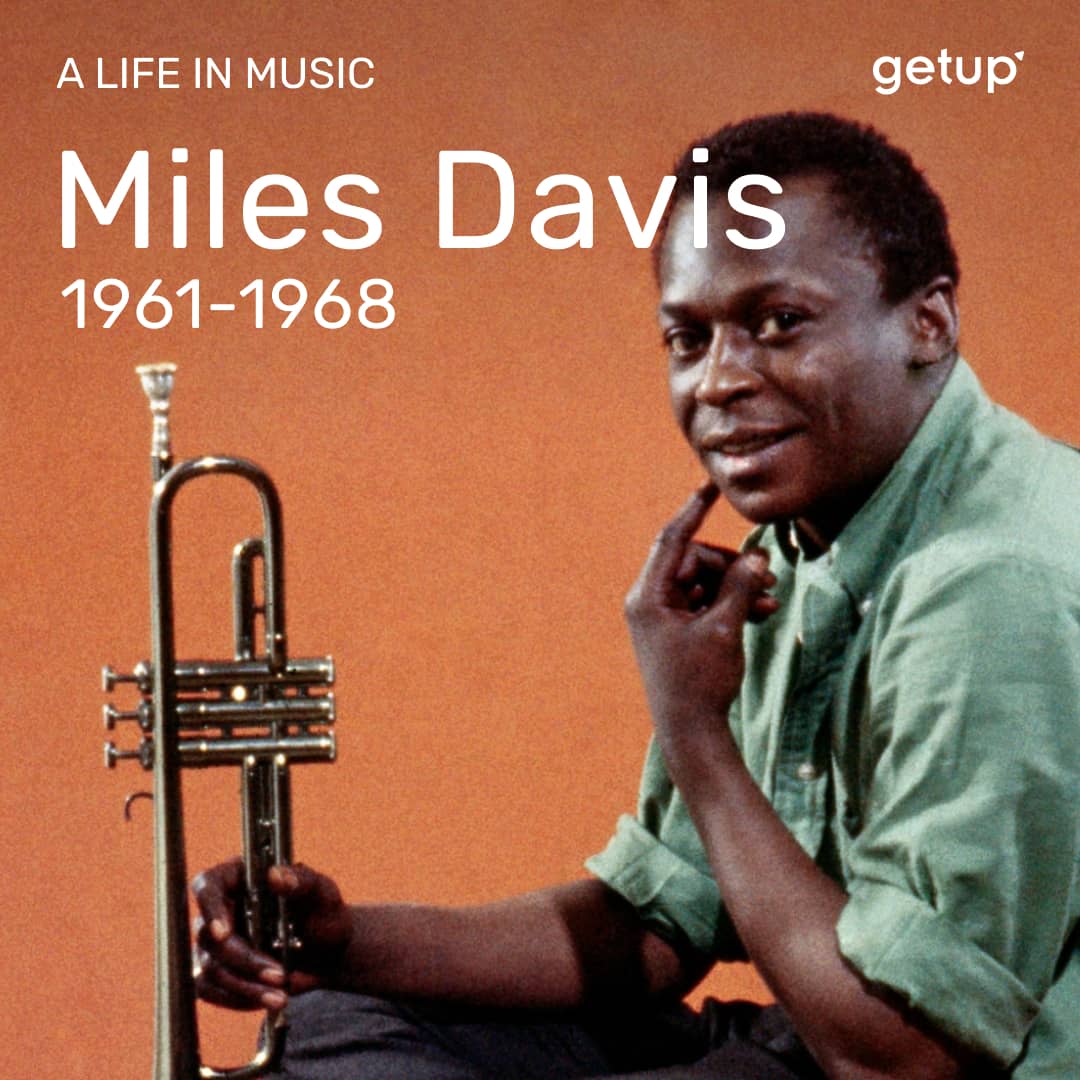At the end of the sixties, through the medium of electricity, Miles gave birth to a trinity: jazz-rock-funk. Around him formed an extended constellation of musicians, caught in a creative (and self-destructive) spiral orchestrated by the trumpeter. It all began with a woman: Betty Mabry, whom Miles married in 1968. It was she who introduced him to Hendrix, James Brown and Sly Stone… and the shock was considerable. How do you get electric guitars into trumpet music? Jazz would be sacrificed! James Brown’s “Cold Sweat” inspired “Frelon Brun”. With In a Silent Way (1969), Miles got rid of the jazz chords in favour of pastoral music, paring everything down to a few simple, repeated themes. It has a feverish jungle atmosphere, the recordings coming from group improvisation sessions directed by Miles and edited in post-production by Teo Macero.
Bitches Brew, a jazz-rock masterpiece that would go on to sell 500,000 copies, was born over the course of three days in August 1969. It was followed by a series of gems such as “Great Expectations” and “Lonely Fire” which are tinged with mystical sitars and tablas. The evolution is constant and the risk-taking is set to maximum, making Miles change course, and sharpen his music. Captivated by Hendrix’s Band of Gypsys, he recorded “Right Off” in April 1970. It all started as an improvised boogie by John Mc Laughlin and Miles simply jumped on the bandwagon. But Miles began to suffer from commercial failure. The public just didn’t get it. Hendrix died and Dave Holland left the band. Until 1975 Michael Henderson, Stevie Wonder's former bassist, was the master of groove. Miles was getting deeper and deeper into this groove – he was now obsessed (“What I Say”). For him, only funk could be authentically black, the blues having been despoiled by whites. The trumpet player was going crazy looking for a community of listeners – in fact he was going crazy full stop! Dressing like a pimp, consuming alarming amounts of cocaine, drinking, taking drugs, and even crashing a luxury car, leaving him with two broken ankles. ‘After this accident, everything became blurry.’ This seven-year period is both the ascension of an artist and a descent into hell.
1972. With Sly Stone, James Brown, Ornette Coleman, and Stockhausen in the lead, Miles entered the studio to record On the Corner. No more solos here. Everybody was concentrating on the raging magma that is the ensemble. Miles attached a wah-wah to his trumpet and changed his whole way of playing. Sometimes he didn’t even play the trumpet anymore, but rather created some nightmarish funk on the keyboard (“Rated X’). The risk taking was dizzying on every level. He had pneumonia, kidney stones, ulcers, a bad hip... He even came close to having a heart attack. And, like his drug use, the funk was getting harder. What could be crazier, more abrasive, more ruthless than “Tatu”? In June 1974 there was a final lull with “He Loved Him Madly”, a funeral meditation that the trumpet player addressed to a deceased Duke Ellington – and perhaps also to himself… It all ends with Agharta and Pangaea, the final concerts recorded in February 1975 in Osaka. ‘Artistically, I felt drained, tired. I had nothing more to say, musically speaking.’ But Miles… who could possibly claim to have said quite so much?
.jpg)





.jpg)
.jpg)
